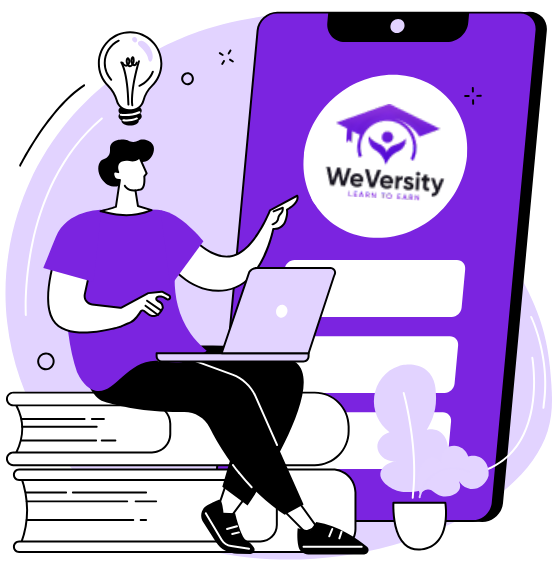In today’s digital economy, web development is no longer just a technical skill, it’s a superpower. As a coach, you are in a unique position to pass on this power to the next generation. But with the tech landscape evolving rapidly, staying ahead means not just knowing what’s current, but what’s next.
Welcome to the future of web development in 2025, a future shaped by automation, user-centric design, and seamless multi-platform experiences.
Let’s dive deep into the latest advancements in web development and explore how you, as a mentor, can equip your students with these future-forward skills.
1. Low-Code & No-Code Platforms: Building Without Barriers
Tools like Webflow, Bubble, and Framer are revolutionizing how websites are built. These platforms allow users to create fully functional, visually stunning websites without writing a single line of code.
As a Coach:
- Teach students how to use these tools to prototype ideas quickly.
- Emphasize the importance of design thinking and UX, even if they’re not traditional coders.
- Show that coding is important, but understanding systems and logic matters more.
2. AI Integration in Web Development
AI is no longer a futuristic concept. From generating code with tools like GitHub Copilot to personalized UX with AI algorithms, intelligent automation is embedded into every stage of development.
You Can Empower Students To:
- Use AI tools to streamline repetitive coding tasks.
- Develop applications that utilize AI for smarter user experiences.
- Stay competitive in the job market by understanding AI-based workflows.
3. Responsive & Mobile-First Design is Non-Negotiable
With over 55% of web traffic now coming from mobile devices, designing for mobile first is essential. Frameworks like Bootstrap 5, Tailwind CSS, and Material UI offer powerful tools for mobile-optimized interfaces.
Teach This:
- Mobile-first design principles that ensure every user has a fast and clean experience.
- Real-world implementation: How major sites (like Airbnb or Amazon) optimize for mobile.
- Testing responsiveness using developer tools and simulators.
4. The API Economy & Headless CMS
Gone are the days of traditional CMS systems only. Today’s developers work in an API-first world, using headless CMS platforms like Strapi, Sanity, or Contentful to fetch and deliver content across devices.
As a Coach:
- Train students to create modular and scalable websites.
- Encourage familiarity with REST APIs and GraphQL.
- Help them understand microservices and how they improve performance.
5. JAMstack Architecture: Fast, Secure, Scalable
JAMstack (JavaScript, APIs, and Markup) offers a new way of building sites that are blazing fast and highly secure. Tools like Netlify, Next.js, and Hugo are key players in this space.
What Students Should Learn:
- How static site generation works.
- Why JAMstack is ideal for SEO and user experience.
- Real projects that showcase JAMstack performance benefits.
6. Cybersecurity Essentials for Developers
With data breaches and online threats rising, developers must understand the principles of security-first development. Concepts like data encryption, two-factor authentication, and Zero Trust Architecture are critical.
You Should:
- Encourage ethical coding practices.
- Assign tasks around building secure login systems.
- Bring in real-world security incidents as learning material.
7. Component-Based Architecture
Component-based design (popularized by React, Vue.js, and Svelte) enables developers to break down complex interfaces into manageable, reusable pieces.
Include In Your Curriculum:
- Core concepts of state management, props, and lifecycle.
- Build UI libraries with reusable components.
- Encourage code reusability to improve performance and collaboration.
8. Accessibility & Inclusive Design
Today, web developers must design for everyone, including users with disabilities. Tools like WAVE, axe, and ARIA roles ensure that sites are usable for people with screen readers, mobility impairments, or color blindness.
Coach’s Role:
- Teach empathy in design.
- Include accessibility testing as part of every project.
- Share real-life stories of how inclusive design changed lives.
Final Thoughts for Coaches
As a coach, you have the power to shape careers, change lives, and contribute to a more skilled, digital world. But that requires staying current, upgrading your teaching content, and being intentional about building skillsets that match today’s industry needs.
By teaching these innovations, you:
- Equip your students with cutting-edge knowledge.
- Boost their confidence in a rapidly changing market.
- Help them build real-world projects that stand out to employers and clients.
Why Coaches Should Join WeVersity.org
At WeVersity.org, we believe in creating a world where education is not limited by geography or privilege. We provide an inclusive platform for coaches to:
- Teach globally – Reach thousands of students from across the world
- Share your knowledge – Upload courses, conduct live sessions, and offer mentorship
- Earn sustainably – Get rewarded for your time, skills, and impact
- Grow professionally – Be a part of a global network of forward-thinking educators
Whether you’re an expert in web development, graphic design, e-commerce, or digital marketing, WeVersity.org is your gateway to global teaching, meaningful impact, and consistent income.
Join us at WeVersity.org/instructor-registration today and be the coach the world is waiting for.

